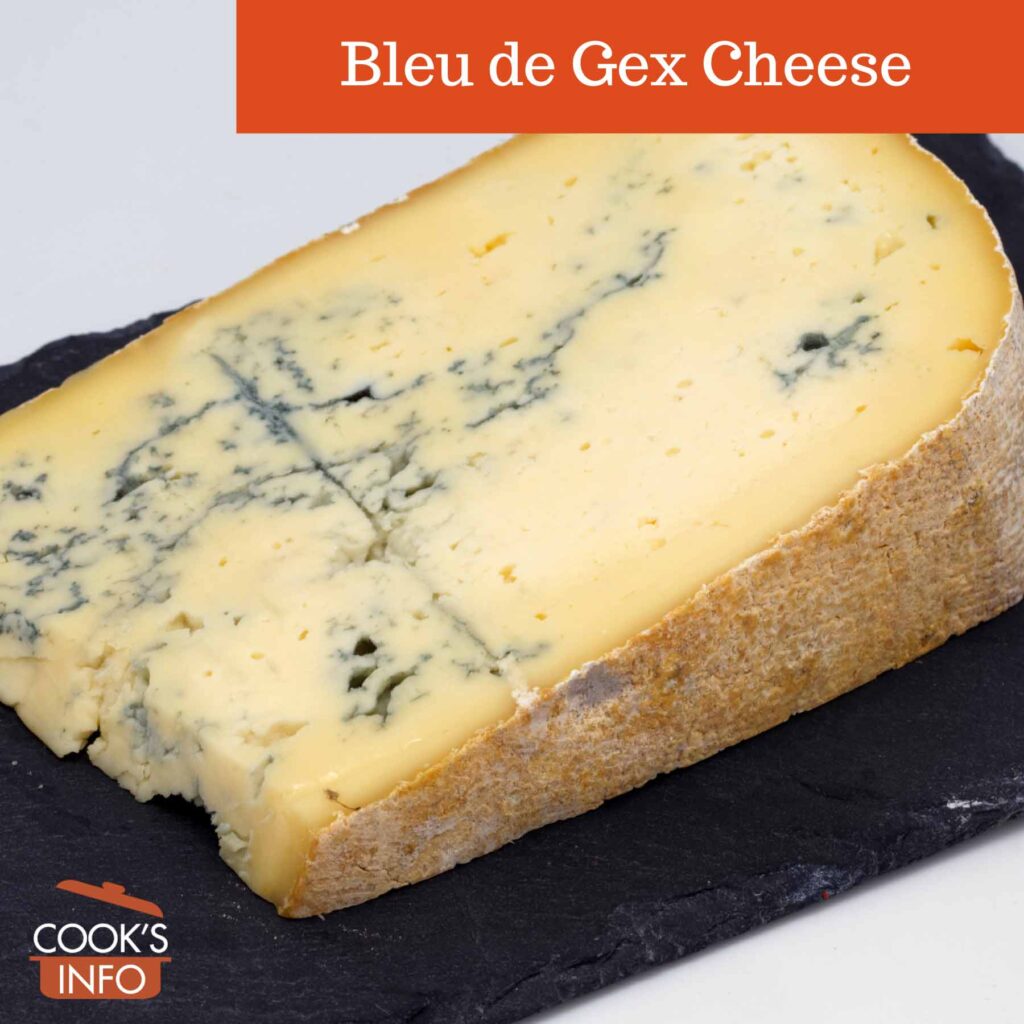
Bleu de gex. Pierre-Yves Beaudouin / wikimedia / 2016 / CC BY-SA 4.0
Bleu de Gex is a blue cheese made from the raw milk of Montbeliarde cows.
The cheese is yellowy inside, and semi-firm, with pale blue-green veins.
When the cheese is young, its taste is very mild; as it ages the taste gets more robust. Some people feel that the flavour of the cheese is influenced by the violets that the cows are allowed to eat while grazing in the local Haut-Jura pastures.
This is a Protected Designation of Origin (PDO) cheese.
Production
To make Bleu de Gex, the milk is heated to 27 C (80 F). Rennet is added, then the curds are cut to the size of small peas, and moulded. It is dry-salted over a period of 4 to 6 days.
The cheeses are inoculated with Penicillium roqueforti or Penicillium glaucum.
It can be ripened in as little as 3 weeks, but is usually allowed to mature 2 to 3 months at 12 C (54 F). During this time, the cheeses are turned 3 to 4 times a week. The name GEX is stamped in the rind of each cheese. The rind also develops a white powder on it.
It is made in the Haut-Jura, which straddles the Ain and Jura départements in the Franche-Comté region on the Swiss border.
It is made in a wheel shape, 34 to 35 cm wide by 8 to 10 cm tall (14 inches wide and 3 to 4 inches tall), depending on the cheesemaker. The average cheese weighs 7.5 kg (12 to 14 pounds).
There are four dairies making it:
- Coopérative fromagère de l’Abbaye (in Chezery-Forens);
- Coopérative fromagère du Haut-Jura (in Les Moussières);
- Fromagerie Rietmann Laitier (in Villard Saint Sauveur);
- Vagne Fromageries (in Poligny).
Cooking Tips
Bleu de Gex melts very well.
Equivalents
1 cup, crumbled ≈ 100 g ≈ ¼ pound
History Notes
Bleu de Gex is said to have its roots in cheesemaking done by monks at Saint Claude’s Abbey in the 1200s. Historically, it was left to develop mould naturally, but that was a bit hit and miss, so it is now inoculated with a mould starter.

